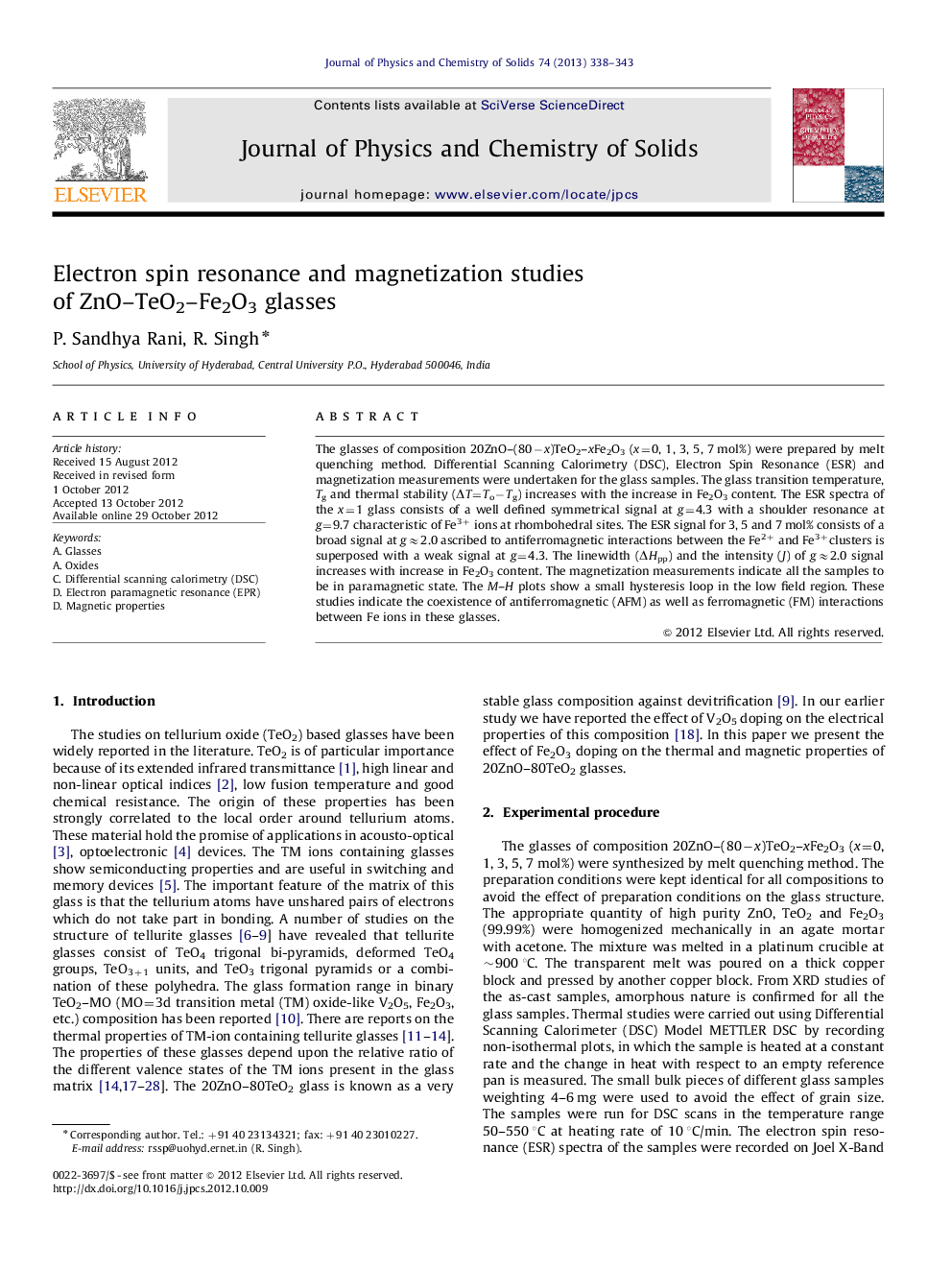| Article ID | Journal | Published Year | Pages | File Type |
|---|---|---|---|---|
| 1516405 | Journal of Physics and Chemistry of Solids | 2013 | 6 Pages |
The glasses of composition 20ZnO–(80−x)TeO2–xFe2O3 (x=0, 1, 3, 5, 7 mol%) were prepared by melt quenching method. Differential Scanning Calorimetry (DSC), Electron Spin Resonance (ESR) and magnetization measurements were undertaken for the glass samples. The glass transition temperature, Tg and thermal stability (ΔT=To−Tg) increases with the increase in Fe2O3 content. The ESR spectra of the x=1 glass consists of a well defined symmetrical signal at g=4.3 with a shoulder resonance at g=9.7 characteristic of Fe3+ ions at rhombohedral sites. The ESR signal for 3, 5 and 7 mol% consists of a broad signal at g≈2.0 ascribed to antiferromagnetic interactions between the Fe2+ and Fe3+clusters is superposed with a weak signal at g=4.3. The linewidth (ΔHpp) and the intensity (J) of g≈2.0 signal increases with increase in Fe2O3 content. The magnetization measurements indicate all the samples to be in paramagnetic state. The M–H plots show a small hysteresis loop in the low field region. These studies indicate the coexistence of antiferromagnetic (AFM) as well as ferromagnetic (FM) interactions between Fe ions in these glasses.
► The DSC, ESR and magnetization were carried out on ZnO–TeO2–Fe2O3 glasses. ► The glass transition temperature, Tg and thermal stability of the glass increases with the increase in Fe2O3 content. ► The Fe3+ ions are at rhombohedral sites. ► The antiferromagnetic (AFM) interactions between the Fe ions is observed for samples containing high Fe ion concentration. ► The coexistence of antiferromagnetic (AFM) as well as ferromagnetic (FM) interactions between Fe ions is observed.
